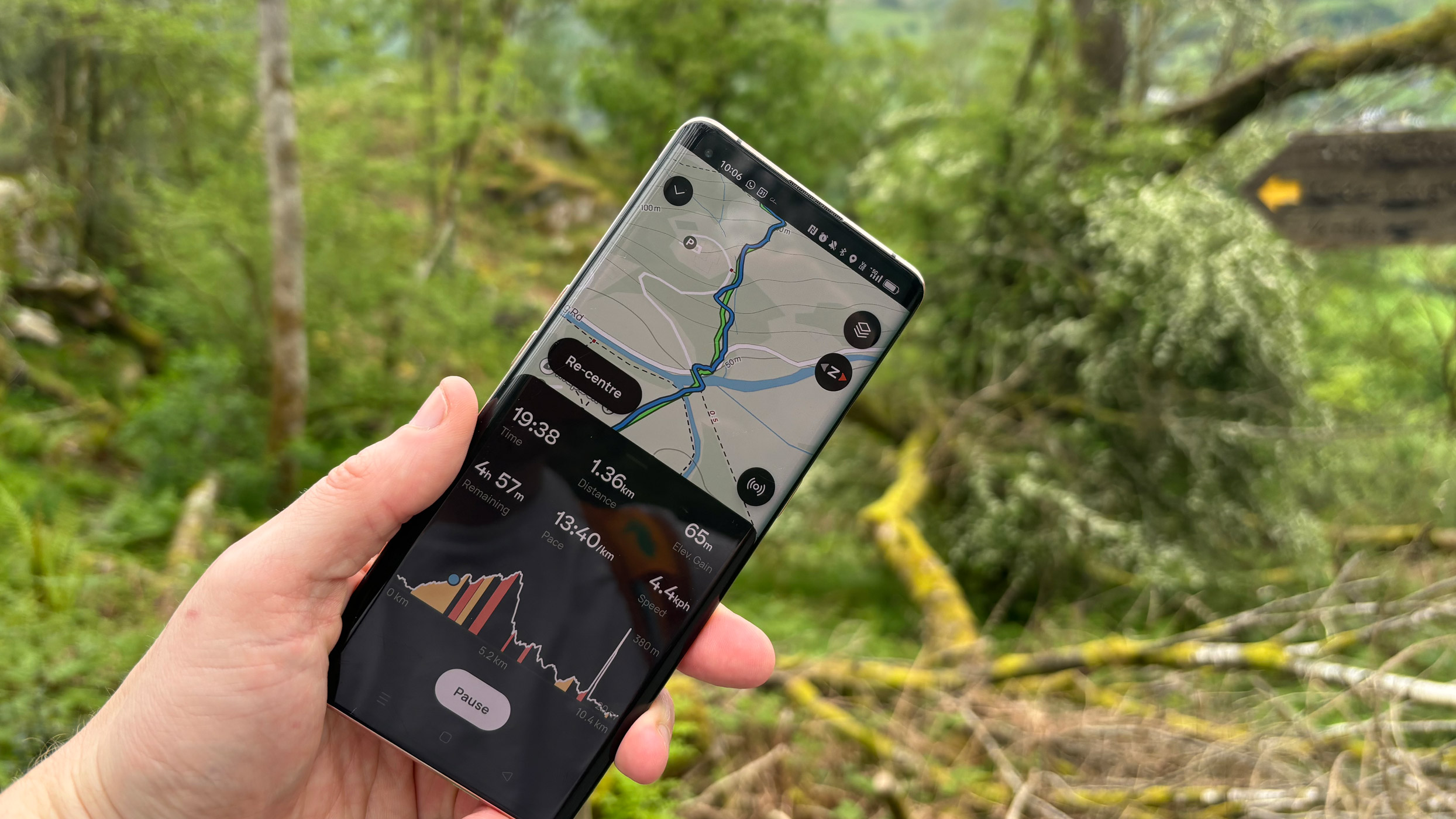AI's environmental impact is a growing concern, but hiking app AllTrails sees a path to coexistance
“That’s something we think about with every feature we build"

- Hiking app AllTrails has just released a new subscription tier with AI features
- We asked AllTrails' Chief Technology Officer how AllTrails reconciles AI's environmental impact with the app's mission statement to help people enjoy the outdoors
- He says AllTrails takes steps to reduce energy cost and maximize efficiency when deploying AI features
Earlier this week we reported that hiking app AllTrails had launched a new subscription tier: Peak, a more expensive subscription plan which makes use of AI tools to enhance your outdoor experience.
These tools include a Community Heatmap, a common feature on the best fitness apps such as AllTrails and contemporaries like Strava. The Heatmap shows where other users are often hiking, allowing you to sort trails by popularity.
Other features include Outdoor Lens, which uses your phone's camera to identify plants, insects, and landmarks, and Trail Conditions, which provides up-to-date information on not just weather, but ground conditions, snowpack, and even mosquito activity on different parts of your trail.
The AllTrails Peak subscription tier costs $79.99 / £79.99 (around AU$125) per year, likely due to the cost of the AI being used.
It's well known that AI is an energy-intensive technology – one of the most popular statistics bandied about is that ChatGPT-4 uses the equivalent of 519ml of water, slightly more than an average bottle, per 100-word email generated. This stat comes from the University of California, Riverside, in a study produced in collaboration with the Washington Post.
AI doesn't, therefore, appear to be an environmentally friendly technology to use at the moment, due to its energy and cooling requirements. AllTrails, however, says it's dedicated to preserving the great outdoors that its users love; the company is partnered with the Leave No Trace and One Tree Planted nonprofits, and contributes 1% of its annual revenue to environmental organizations.
When I spoke to AllTrails' Chief Technology Officer, James Graham, about the new subscription tiers, I also asked him if AllTrails' use of AI was at odds with the company's environmental messaging.
Sign up for breaking news, reviews, opinion, top tech deals, and more.
Being careful about AI

"Great question. That's something we think about with every feature we build," Graham told me.
"Our data scientists take time to build features like this more efficiently... We think about the size of the model, and for many of our features, we don’t need to use the largest, highest-intensity model possible, so we don’t always use the top-of-the-line model which consumes the most energy. We’re very deliberate with how we use it."
AllTrails, it seems, tries to mitigate the impact of AI's power consumption and enormous cooling requirements by using smaller, more efficient models specifically developed to implement its features with minimal impact. But Graham also thinks that as AI evolves, its demands will decrease, telling me, "As new technology comes out, we’re already seeing the energy cost of using AI is going down, and we believe that trend will continue,"
While the energy demands for each individual instance of AI use may decrease, the increasing overall usage of AI could offset these savings. A January 2025 MIT report states that data centers already account for 1-2% of global energy usage: by 2030, this could reportedly reach up to 21% due to the demands placed on AI.
If more developers used smaller models and more energy-efficient processes we might avert this dire prediction. However, while the AI tools used by AllTrails look impressive, and are designed to spur more people to spend more time outside, which can be to the benefit of environmental causes, concerns will persist about AI's wider usage, and what it really means to 'leave no trace'.
You might also like

Matt is TechRadar's expert on all things fitness, wellness and wearable tech.
A former staffer at Men's Health, he holds a Master's Degree in journalism from Cardiff and has written for brands like Runner's World, Women's Health, Men's Fitness, LiveScience and Fit&Well on everything fitness tech, exercise, nutrition and mental wellbeing.
Matt's a keen runner, ex-kickboxer, not averse to the odd yoga flow, and insists everyone should stretch every morning. When he’s not training or writing about health and fitness, he can be found reading doorstop-thick fantasy books with lots of fictional maps in them.
You must confirm your public display name before commenting
Please logout and then login again, you will then be prompted to enter your display name.